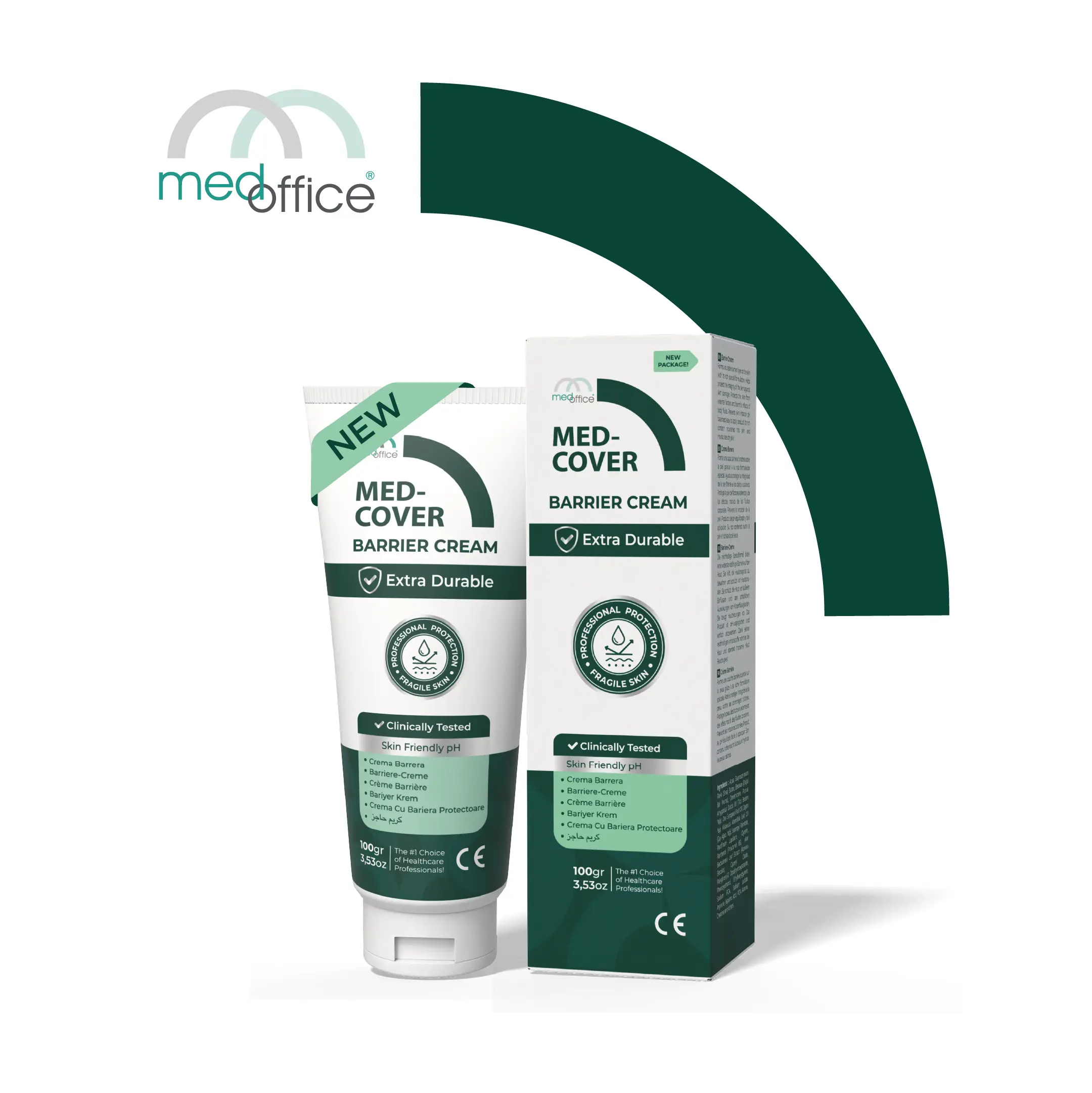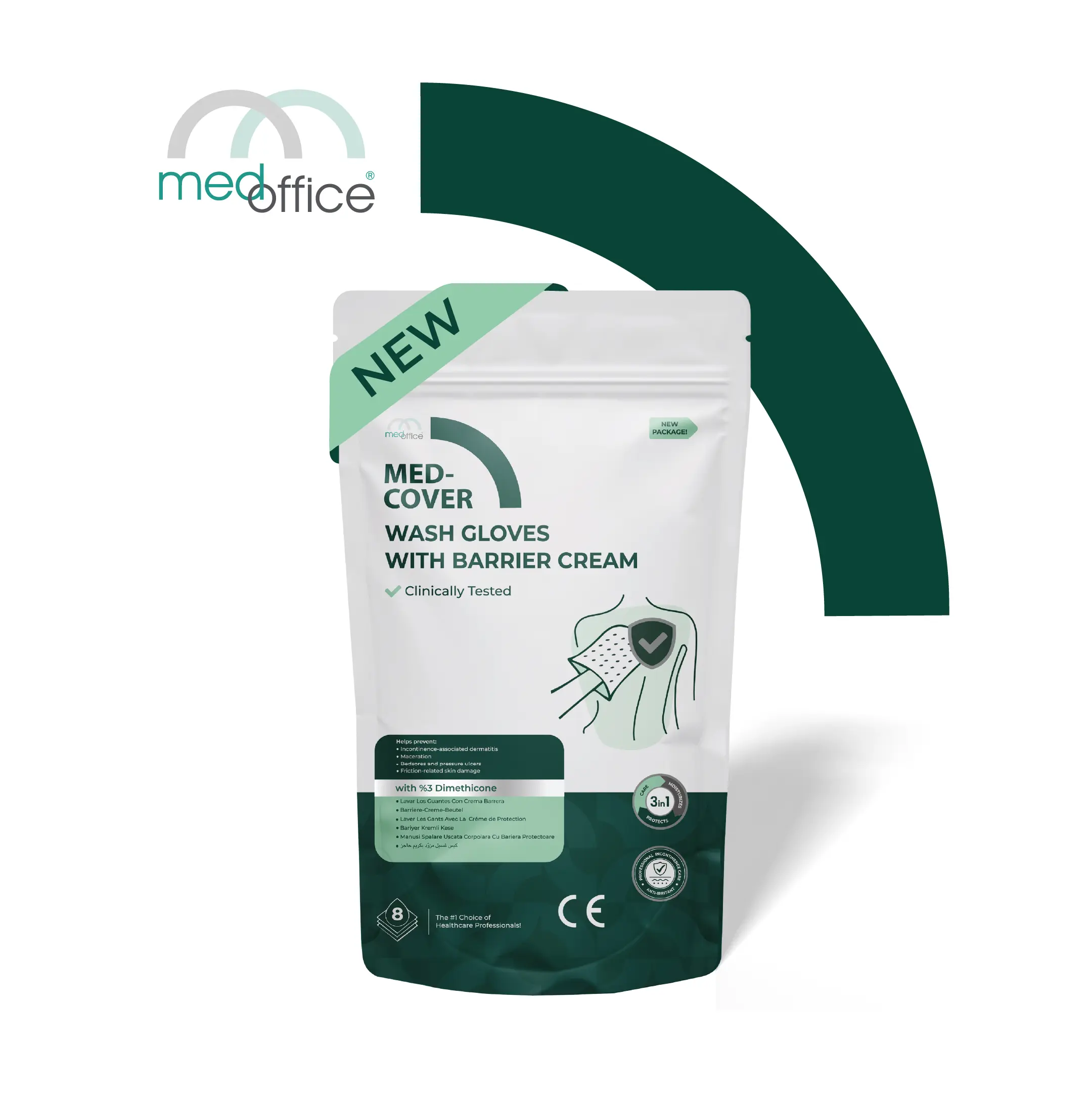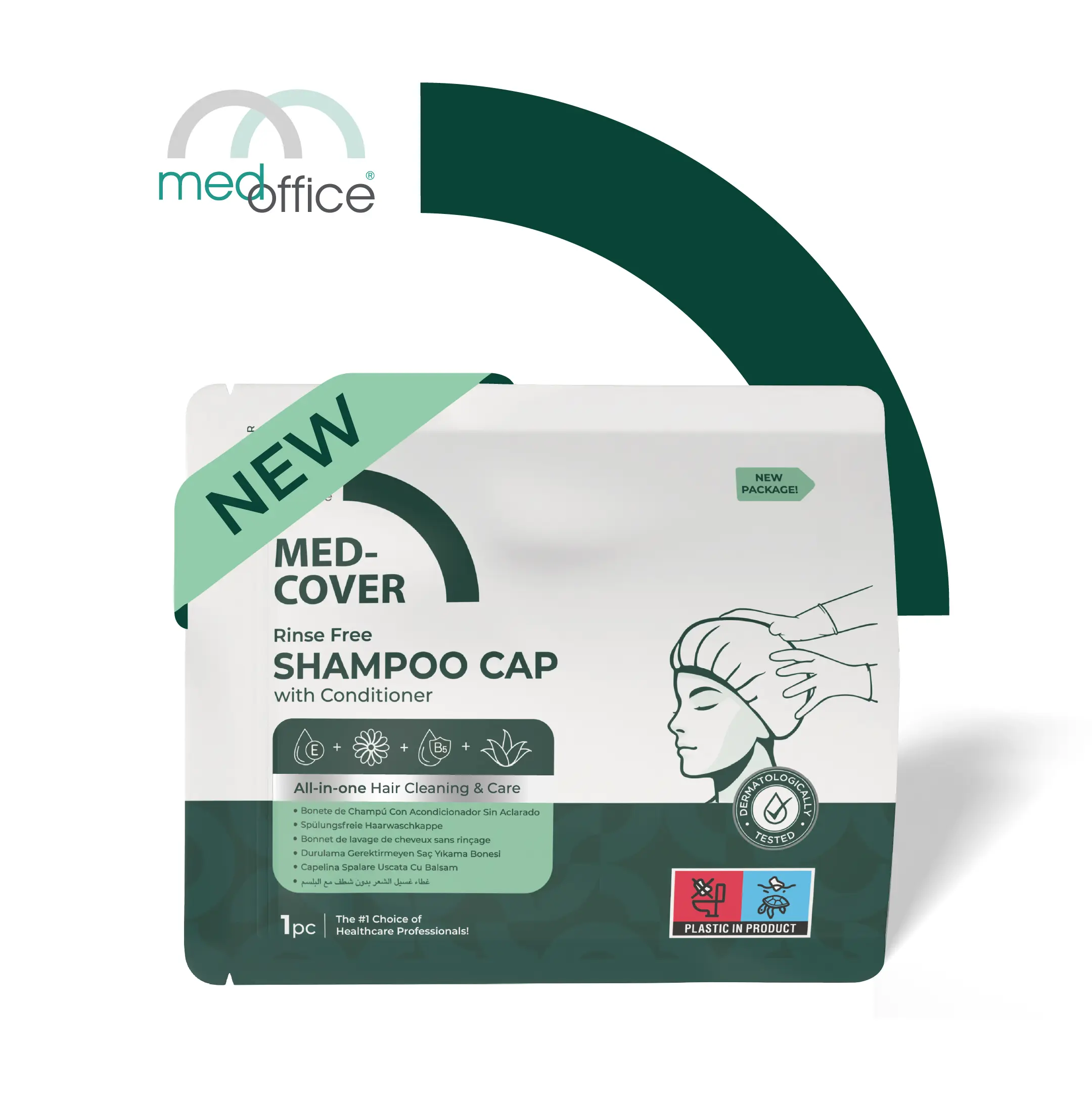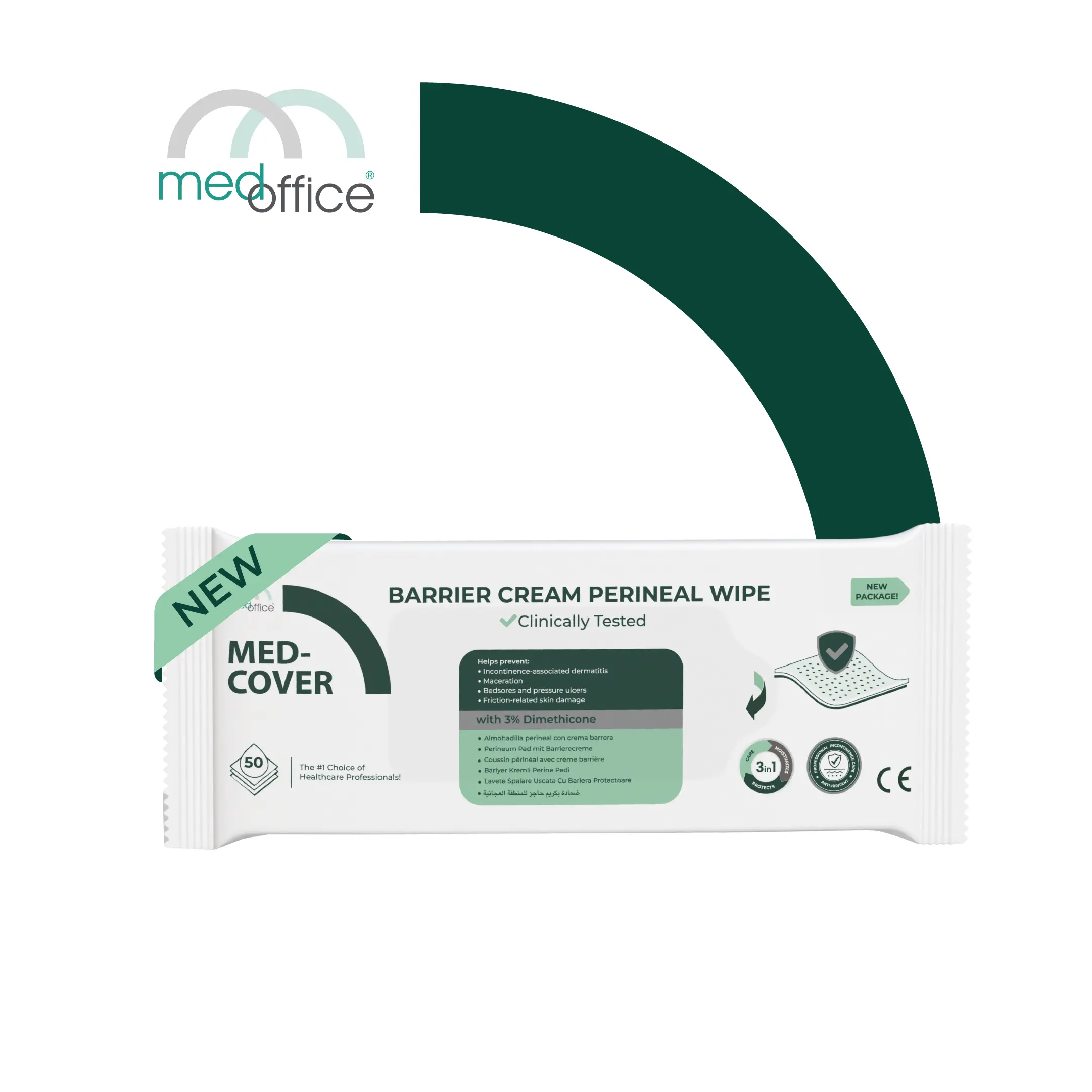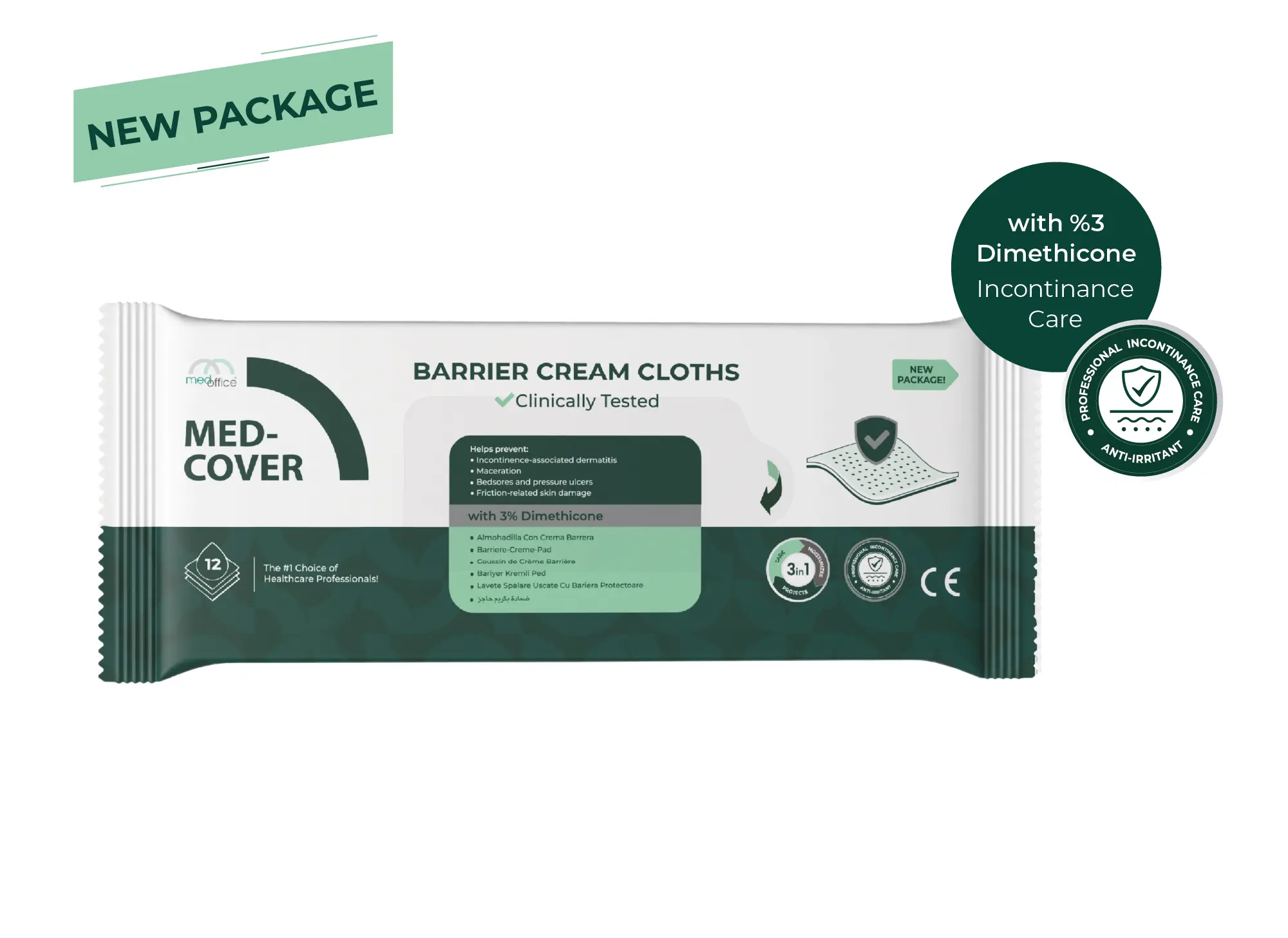

MED-COVER Barrier Cream Cloths
It is easy to use, prevents the risk of contamination, and has a cleaning, maintenance and protection effect.
Incontinence Care with 3% Dimethicone
-
3-in-1 — Care · Protection · Moisture support
-
Supports skin integrity in areas at risk of friction/soreness, maceration, and pressure.
-
No rinsing required, single-use; large pad size for body areas.
-
Alcohol-free; Suitable for sensitive skin.
-
It creates a barrier protective layer and meets the daily care needs of the skin.
Product Content
Ingredients
Information is being updated.
General Product Content
Usage Areas
• Whole body: Intact skin such as arms, legs, back, hips, shoulders, heels, etc.
• Barrier support for pressure points and areas subject to friction
• Rinseless cleansing + barrier for patients with limited mobility who require bed rest
Usage Instructions
• Open the package; use each pad only once.
• Gently wipe the area; do not rinse.
• Use separate pads for each area; discard soiled pads.
• Only on intact skin; avoid contact with the face, eyes, and mucous membranes.
FAQ
1. What are Barrier Cream Pads?
Creates a transparent, breathable barrier film on the skin with 3% dimethicone, helping to protect against irritating fluids and friction.
2. Which areas is it used for?
Arms, legs, back, hips, etc. Intact skin areas throughout the body.
3. How to apply?
Gently wipe the area with the pad; no rinsing is required. Disposable; use a new pad for each area.
4. When and how often should it be replaced?
After care and after each contamination/contact; it can be used several times a day depending on the clinical situation.
5. Is it suitable for use on open wounds?
Not suitable. Use only on intact skin, avoiding eyes/mucosa.
Technical Specifications
Material / Production
• Nonwoven: 60 GSM white spunlace (50% viscose / 50% PES)
• Packaging: FlowPack, 60 PE + 12 PET
• Folding: Z-fold
Packaging & Logistics Information (3 variants)
Variant A — 12 units/pack
• Ref: MCV0012 Barcode (GTIN-13): 8681020477618
• Box: 100 packages/box
• Pallet: 36 boxes/pallet
Variant B — 24 units/pack
• Ref: MCV0024 Barcode (GTIN-13): 8681020477687
• Box: 50 packages/box
• Pallet: 36 boxes/pallet
Variant C — 50 units/pack
• Ref: MCV0050 Barcode (GTIN-13): 8681020477823
• Box: 30 packages/box
• Pallet: 36 boxes/pallet
Popular Products
Other Popular Products


